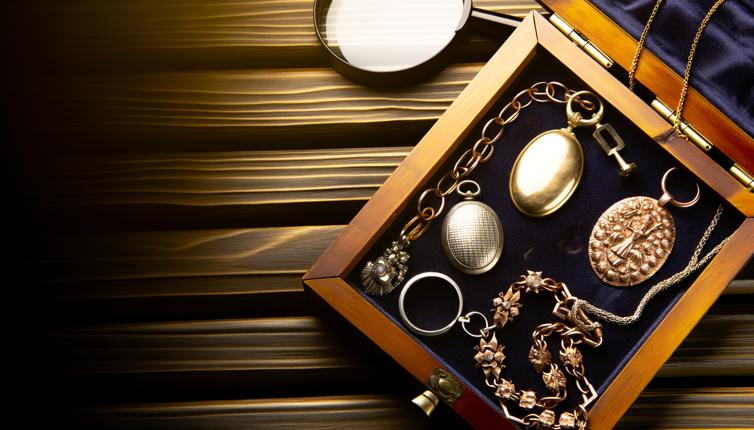What are Jewelry Hallmarks?
Jewelry hallmarks are small markings or engravings that are stamped onto jewelry pieces to indicate certain information about the piece. These markings can include the purity of the metal, the manufacturer's mark, the country of origin, and other important details. Hallmarks are typically found on the inside of rings, on the back of earrings or pendants, or on the clasps of necklaces or bracelets.,Different countries have different hallmarking systems, so it's important to familiarize yourself with the hallmarks used in the country where the jewelry was made. For example, in the United States, you may find hallmarks such as '925' to indicate sterling silver or '14K' to indicate 14-karat gold. In the United Kingdom, you may find hallmarks with symbols such as the lion passant for sterling silver or a crown for gold.,By understanding jewelry hallmarks, you can determine the purity of the metal used in the jewelry piece, which is an important factor in determining its value and quality. It's also a way to ensure that you are purchasing authentic and genuine jewelry.
What are Jewelry Certifications?
In addition to hallmarks, some jewelry pieces may also come with certifications. Jewelry certifications are documents issued by independent organizations that assess the quality and authenticity of the piece. These certifications provide detailed information about the jewelry's materials, such as the type and weight of the gemstones, the purity of the metal, and any treatments or enhancements applied to the gemstones.,One of the most well-known jewelry certifications is the Gemological Institute of America (GIA) certification. This certification is widely recognized in the industry and provides a comprehensive assessment of the jewelry's quality. It includes information about the 4Cs of diamonds (carat weight, color, clarity, and cut), as well as details about any additional gemstones in the piece.,When purchasing high-value or precious gemstone jewelry, it's advisable to look for certifications from reputable organizations. These certifications provide peace of mind that the jewelry has been thoroughly assessed and meets certain quality standards. It's important to note that certifications may come at an additional cost, but they can add value to the jewelry piece and make it easier to resell in the future.
What to Look for When Buying Jewelry
When buying jewelry, whether it's a diamond engagement ring or a simple gold necklace, there are a few things to keep in mind:,- Look for hallmarks: Check for the presence of hallmarks on the jewelry piece. These markings can provide valuable information about the materials used and the quality of the piece. Familiarize yourself with the hallmarks used in the country where the jewelry was made.,- Consider certifications: For high-value or precious gemstone jewelry, consider looking for certifications from reputable organizations. These certifications can provide a detailed assessment of the jewelry's quality and authenticity.,- Ask for documentation: When purchasing jewelry, especially from private sellers or online platforms, ask for any documentation that accompanies the piece. This can include receipts, appraisals, or certificates of authenticity.,- Buy from reputable sources: It's always best to buy jewelry from reputable sources such as established jewelers or certified online retailers. These sources are more likely to sell authentic and high-quality jewelry.,By following these guidelines, you can make more informed decisions when buying jewelry and ensure that you are getting a piece that meets your expectations in terms of quality and authenticity.
Conclusion
Jewelry hallmarks and certifications are essential tools for understanding the quality and authenticity of jewelry. By familiarizing yourself with hallmarks and looking for certifications, you can make more informed decisions when purchasing jewelry. These markings and documents provide valuable information about the materials used, the origin, and the overall quality of the jewelry. Whether you're buying a simple gold necklace or an exquisite diamond ring, having this knowledge will help you choose jewelry that meets your standards and preferences.








